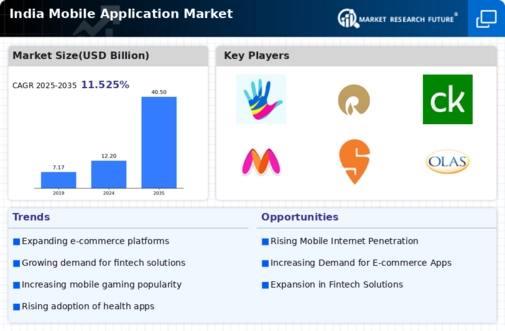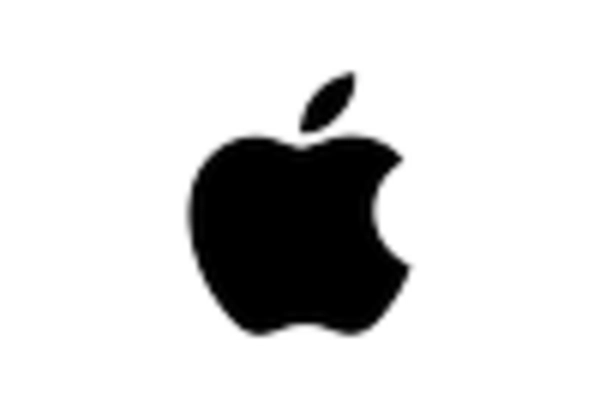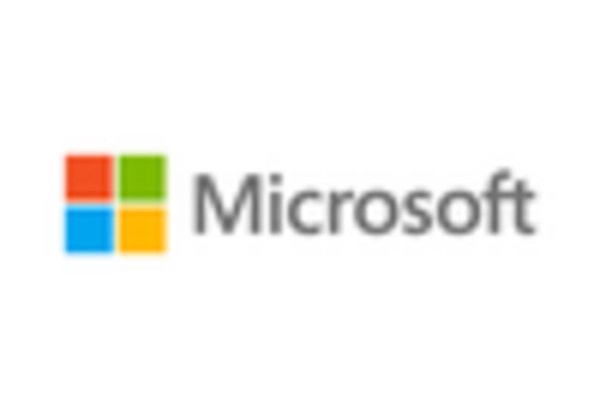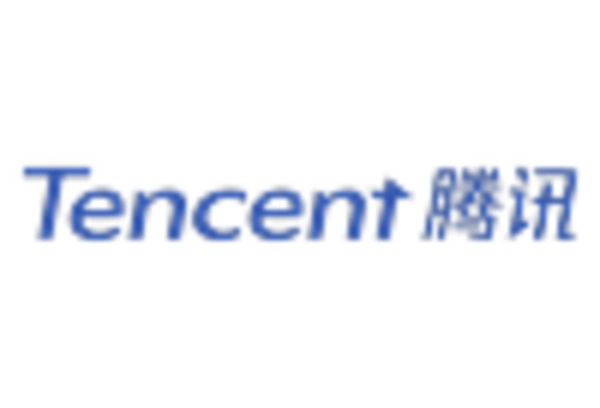Growing Internet Connectivity
The mobile application market in India is significantly influenced by the rapid expansion of internet connectivity. As of November 2025, India boasts over 700 million internet users, with a substantial portion accessing the web via mobile devices. This connectivity enables seamless access to mobile applications, fostering a culture of digital engagement. The proliferation of affordable data plans, with average costs dropping to around $0.10 per GB, further enhances user accessibility to mobile applications. This trend indicates a shift towards mobile-first strategies among businesses, as they recognize the potential of reaching a vast audience through mobile platforms. The increasing reliance on mobile applications for various services, including e-commerce, entertainment, and education, underscores the importance of robust internet connectivity in driving the mobile application market.
Surge in Smartphone Penetration
The mobile application market in India is experiencing a notable surge in smartphone penetration, a critical driver of growth. As of November 2025, smartphone adoption in India reaches approximately 800 million users, representing a penetration rate of around 60%. This widespread accessibility to smartphones facilitates the download and usage of mobile applications across diverse demographics. The increasing affordability of smartphones, coupled with competitive pricing strategies from manufacturers, further accelerates this trend. Consequently, developers are motivated to create applications tailored to the needs of a broader audience, thereby expanding the mobile application market. The rise in smartphone penetration not only enhances user engagement but also encourages innovation in app development, as companies strive to capture the attention of a growing user base.
Increased Investment in Startups
Increased investment in startups is a vital driver of innovation and growth in the mobile application market in India. As of November 2025, venture capital funding in Indian tech startups has reached approximately $10 billion, with a significant portion directed towards mobile application development. This influx of capital enables startups to experiment with new ideas and technologies, fostering a competitive landscape. Investors are particularly interested in applications that address local needs, such as health, education, and entertainment, which further diversifies the mobile application market. The rise of incubators and accelerators also plays a crucial role in nurturing talent and facilitating the growth of promising mobile application startups, thereby contributing to the overall expansion of the market.
Shift Towards Remote Work and Learning
The mobile application market in India is shifting towards remote work and learning, increasingly relevant in the current landscape. As of November 2025, approximately 40% of the workforce engages in remote work, while online education platforms have seen a 200% increase in user registrations. This trend drives demand for mobile applications that facilitate communication, collaboration, and learning. Companies are investing in developing applications that cater to the needs of remote workers and students, enhancing productivity and engagement. The rise of mobile applications for video conferencing, project management, and online learning underscores the importance of adaptability in the mobile application market. This shift not only influences user preferences but also encourages developers to innovate and create solutions that meet the evolving demands of a mobile-centric workforce.
Rise of E-commerce and Digital Payments
The rise of e-commerce and digital payment solutions is propelling the mobile application market in India. As of November 2025, The e-commerce sector in India is projected to reach a valuation of $200 billion. A significant portion of transactions is occurring through mobile applications. The convenience of mobile shopping, coupled with the integration of secure payment gateways, has transformed consumer behavior. Users increasingly prefer mobile applications for their shopping needs, leading to a surge in demand for e-commerce apps. Additionally, the growth of digital payment platforms, which have seen a 300% increase in user adoption over the past three years, further supports this trend. This shift towards mobile commerce not only enhances the user experience but also drives innovation within the mobile application market, as developers seek to create more efficient and user-friendly applications.

















Leave a Comment